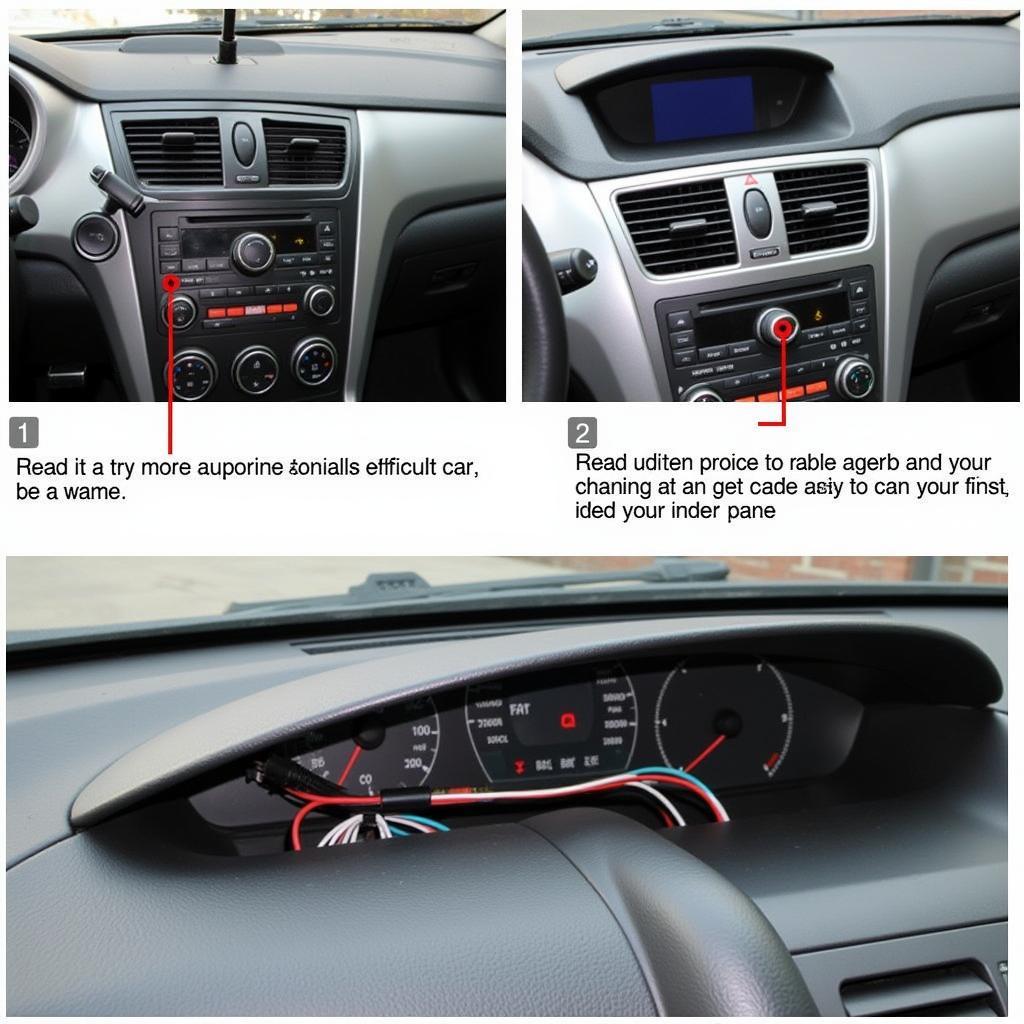The parking brake warning light is a crucial safety feature in your car’s dashboard. It’s designed to alert you about two main things: a potentially engaged parking brake and possible issues with your braking system. Ignoring this light could lead to driving hazards and potential damage to your vehicle.
Understanding the Parking Brake Warning Light
This warning light typically features an exclamation mark within a circle and the letter “P” or the word “BRAKE.” When you see this light illuminated, it usually means your parking brake, also known as the emergency brake or handbrake, is engaged.
However, if the light stays on even after you’ve fully released the parking brake, it indicates a potential problem that requires further investigation.
Common Reasons Your Parking Brake Warning Light is On
Several factors can cause the parking brake warning light to stay illuminated:
- Engaged Parking Brake: This is the most common and obvious reason. Always double-check that you’ve fully released the parking brake before driving.
- Low Brake Fluid: The warning light can activate if the brake fluid level in the reservoir is low. This could indicate a leak in your brake lines, which requires immediate attention.
- Worn Brake Pads: Brake pads wear down over time. When they reach a certain level of wear, the warning light might come on.
- Faulty Parking Brake Switch: The switch that detects if the parking brake is engaged can malfunction, causing the light to stay on even when the brake is disengaged.
- Electrical Issue: A short circuit or wiring problem within the parking brake system can also trigger the warning light.
“A common mistake drivers make is not realizing the connection between the parking brake and overall brake fluid levels,” says John Davis, a senior automotive engineer at a leading car manufacturer. “Even a slight leak in the brake lines can trigger the parking brake warning light.”
What to Do When the Parking Brake Warning Light Comes On
- Safely Park Your Vehicle: Find a safe location to pull over as soon as possible.
- Check the Parking Brake: Ensure the parking brake is fully disengaged. If it’s already released, move on to the next step.
- Inspect Brake Fluid Level: Carefully open the brake fluid reservoir and check the fluid level. If it’s low, add the recommended brake fluid type.
- Inspect for Leaks: Look for any signs of brake fluid leaks around the brake lines, calipers, and the master cylinder.
- Consult a Mechanic: If you’re unable to identify the issue or suspect a problem beyond low brake fluid, it’s crucial to consult a qualified mechanic for diagnosis and repair.
Ignoring the parking brake warning light can lead to serious safety hazards, including:
- Reduced Braking Performance: Driving with engaged parking brakes puts extra strain on the braking system, leading to decreased effectiveness and potential brake failure.
- Overheating Brakes: Driving with the parking brake on can generate excessive heat, potentially damaging brake components and reducing their lifespan.
- Increased Fuel Consumption: Driving with the parking brake engaged forces the engine to work harder, leading to decreased fuel efficiency.
Can I Still Drive With the Parking Brake Warning Light On?
While it might be tempting to ignore a persistently illuminated parking brake warning light, it’s highly discouraged.
“Driving with the parking brake warning light on can exacerbate existing problems and lead to costly repairs,” cautions Davis. “It’s always best to err on the side of caution and get your vehicle inspected by a professional.”
what does parking brake warning light mean
Maintaining Your Braking System
Regular maintenance can prevent most parking brake and braking system issues. This includes:
- Regular Brake Fluid Checks: Check your brake fluid level at least once a month and top it up as needed.
- Timely Brake Pad Replacement: Replace your brake pads according to your car manufacturer’s recommended schedule.
- Annual Brake Inspections: Have your entire braking system inspected by a qualified mechanic at least once a year.
1997 nissan pickup park brake warning switch
The parking brake warning light plays a critical role in your safety on the road. By understanding what triggers this light and addressing the underlying issues promptly, you can ensure optimal braking performance and prevent potential hazards. Remember, when it comes to brakes, prevention is always better than cure.

